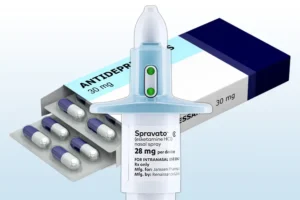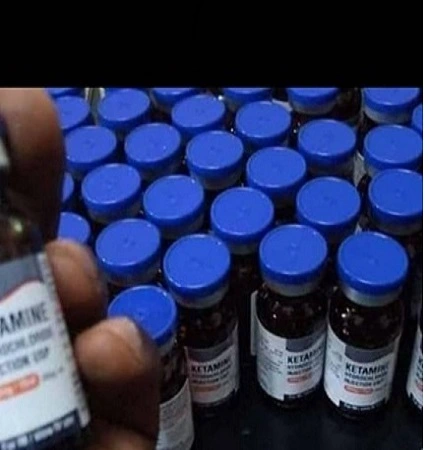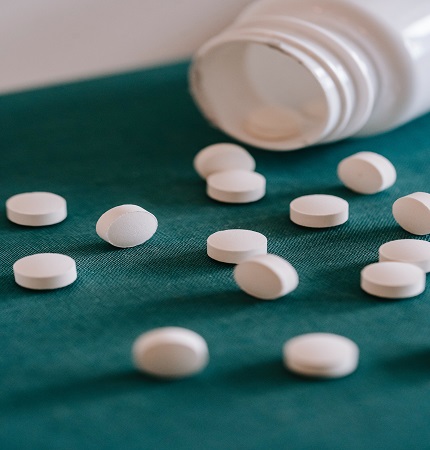Ketamine nasal spray
Ketamine nasal spray also known as esketamine is use as a nasal spray to treat resistant depression and major depressive disorder (MDD). The main type of ketamine nasal spray in used is SPRAVATO (esketamine) CIII nasal spray, which is administered in combination with an oral antidepressant.

Those who can take ketamine nasal spray
Ketamine nasal spray is used to treat patients with treatment-resistant depression (TRD) and major depressive disorder (MDD) who have chronic suicidal ideation and:
- A defined depression diagnosis
- Have well-controlled blood pressure
- Can commit to biweekly visits with a support person for transportation
- Have an established provider managing their care
- Have not found relief from at least 3 initial treatment therapies
- Are seeking an alternative to electroconvulsive therapy (ECT)
- Additional screening criteria
Responsiveness to ketamine nasal spray
While no formalized definition of treatment-resistant depression currently exists, TRD is commonly defined as failure of depressive symptoms to respond to both psychological and psychopharmacological interventions such as therapy or antidepressants. TRD represents the highest direct and indirect medical costs among those with MDD. Individuals with TRD are twice as likely to be hospitalized among those with MDD and have an almost 14% lifetime risk of suicidal behavior compared to 10% for those with MDD.
Ketamine trederick md
Those who would not benefit from ketamine as a form of outpatient therapy and would instead be recommended for alternative nonketamine therapies include:
- Patients with active substance abuse (alcohol or drugs)
- Patients with ketamine allergies or insensitivities
- Patients who have depression due to bipolar disorder, schizophrenia or other psychotic disorders
- Patients with uncontrolled hypertension due to ketamine’s blood pressure raising effects
- Patients with a known history of an aneurysmal vascular disease, arteriovenous malformations or intracranial hemorrhages
Ketamine near
The full spectrum of ketamine’s antidepressant and antisuicidal effects have not been fully explained. However, we do know that this novel approach to therapy works with the brain’s NMDA receptors, which play a role in several neurological functions like memory, learning, movement and more. This is an alternative to SSRIs (Prozac, Paxil, Zoloft), which work with serotonin receptors.

We also know that ketamine affects other receptors and pathways in the brain, which creates a combination of positive effects that help combat depression.
What Ketamine nearby Feels Like
Doctors will begin by assessing the patient, including vital signs, mood and response to previous treatment (if any). Patients will have their blood pressure checked to ensure a proper level since patients with high blood pressure are not eligible for ketamine therapy.
Patients will likely be asked to blow their nose and will then be reclined at a 45-degree angle. The patient is given the nasal spray and self-administers the drug by inhaling the spray in each nostril. After 5 minutes, a second dose will be administered, and then after another 5 minutes an optional third dose will be administered.
After the last dose is inhaled, the patient will be monitored and then periodically assessed for depression, suicidality, hallucinations, dissociation and physical symptoms. The doctor will also keep tabs on the patient’s blood pressure. After the 2-hour mark, the patient will be able to go home with the assistance of a driver if the doctor deems it safe.
For the first 8 weeks of treatment, there are 12 total sessions twice weekly for the first 4 weeks, and then once weekly for the next 4 weeks. After the initial 8 weeks patients can receive treatment as often as once per week or as infrequently as once per month.
Ketamine versus Propofol
Over the last 2 decades, several studies have shown that ketamine produces antidepressant and anti-suicidal effects.
Risks for patients eligible for ketamine therapy are generally minor. Patients are monitored immediately after administration of the spray to check for side effects such as:
- Burning/discomfort
- Dissociation, including out-of-body experience
- Drowsiness/grogginess
- Allergic reaction
- Anxiety or panic
- Blood pressure elevation
- Nausea and vomiting (uncommon)
Most of these side effects wear off quickly and patients usually experience them less frequently as they progress with treatment. Patients are kept under close observation for up to 2 hours after the administration of ketamine nasal spray to ensure safety.
Can ketamine cause heart palpitations
- Abuse and misuse. There is a risk for abuse and physical and psychological dependence with SPRAVATO treatment. Your healthcare provider should check you for signs of abuse and dependence before and during treatment with SPRAVATO.
Tell your healthcare provider if you have ever abused or been dependent on alcohol, prescription medicines, or street drugs.
Your healthcare provider can tell you more about the differences between physical and psychological dependence and drug addiction.
- Sedation and dissociation. SPRAVATO may cause sleepiness (sedation), fainting, dizziness, spinning sensation, anxiety, or feeling disconnected from yourself, your thoughts, feelings, space and time (dissociation).
Tell your healthcare provider right away if you feel like you cannot stay awake or if you feel like you are going to pass out.
Your healthcare provider must monitor you for serious side effects for at least 2 hours after taking SPRAVATO. Your healthcare provider will decide when you are ready to leave the healthcare setting.
- SPRAVATO Risk Evaluation and Mitigation Strategy (REMS). Because of the risks for sedation, dissociation, and abuse and misuse, SPRAVATO is only available through a restricted program called the SPRAVATO Risk Evaluation and Mitigation Strategy (REMS) Program. SPRAVATO can only be administered at healthcare settings certified in the SPRAVATO REMS Program. Patients treated in outpatient healthcare settings (e.g., medical offices and clinics) must be enrolled in the program.
- Increased risk of suicidal thoughts and actions. Antidepressant medicines may increase suicidal thoughts and actions in some people 24 years of age and younger, especially within the first few months of treatment or when the dose is changed.
Ketamine vs esketamine
Depression and other serious mental illnesses are the most important causes of suicidal thoughts and actions. Some people may have a higher risk of having suicidal thoughts or actions. These include people who have (or have a family history of) depression or a history of suicidal thoughts or actions.
Ketamine near rhyme
Pay close attention to any changes, especially sudden changes, in mood, behavior, thoughts, or feelings, or if you develop suicidal thoughts or actions.
Tell your healthcare provider right away if you have any new or sudden changes in mood, behavior, thoughts, or feelings.
Keep all follow-up visits with your healthcare provider as scheduled. Call your healthcare provider between visits as needed, especially if you have concerns about symptoms.
Things To Avoid While Taking ketamine nasal spray?
Do not drive, operate machinery, or do anything where you need to be completely alert after taking SPRAVATO. Do not take part in these activities until the next day following a restful sleep. See “What is the most important information I should know about SPRAVATO?”
limitations of ketamine nasal spray for depression
SPRAVATO is a prescription medicine, used along with an antidepressant, taken by mouth to treat:
- Adults with treatment-resistant depression (TRD)
- Depressive symptoms in adults with major depressive disorder (MDD) with suicidal thoughts or actions
- SPRAVATO is not for use as a medicine to prevent or relieve pain (anesthetic). It is not known if SPRAVATO is safe or effective as an anesthetic medicine.
- It is not known if SPRAVATO is safe and effective for use in preventing suicide or in reducing suicidal thoughts or actions. SPRAVATO is not for use in place of hospitalization if your healthcare provider determines that hospitalization is needed, even if improvement is experienced after the first dose of SPRAVATO.
- It is not known if SPRAVATO is safe and effective in children.
Which ketamine make you sleepy
- liquid ketamine ( infusion) = $25
- ketamine tablet = $42
- ketamine nasal spray = $100
- ketamine powder (1mg) = $40
- ketamine powder ( 1kg and above) = $15,000/kg
- testosterone enanthate = $28
- testosterone cypionate = $25
Conclusion
Ketamine continues to gather interest as a potential treatment for depression, especially treatment resistant depression. That said, research on the benefits of ketamine for depression remains relatively new. Experts emphasize Trusted Source the need to continue exploring its long-term safety and effectiveness.







admin –
Thanks for the package. the quality is excellent
Helen –
Need 10 more. Love the quality